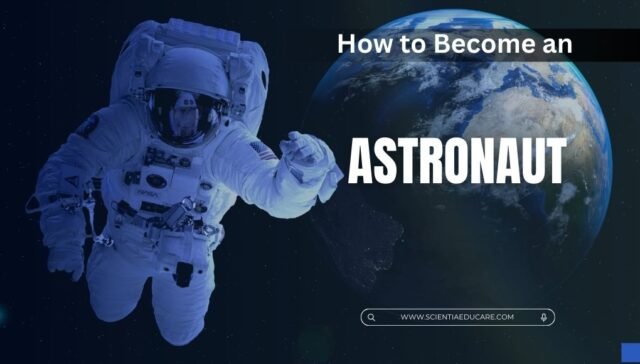Embarking on a journey to become an astronaut is a dream that combines rigorous education, extensive training, and a passion for exploration. This comprehensive guide outlines the steps and requirements to pursue a career as an astronaut, explores global job prospects, and highlights top institutions offering relevant courses.
How to Become an Astronaut,
Requirements to be an astronaut,
How to join NASA astronaut program,
Astronaut training process explained,
Education needed for astronauts,
Steps to become a space traveler
Table of Contents
- Understanding the Role of an Astronaut
- Educational Pathways
- Gaining Relevant Experience
- Meeting Physical and Medical Requirements
- Developing Essential Skills
- Application Process
- Global Job Prospects
- Top Universities and Institutions Offering Relevant Courses
- Further Reading
Understanding the Role of an Astronaut
Astronauts are trained professionals who pilot spacecraft, conduct research, and perform experiments in space. Their responsibilities vary depending on the mission and can include operating spacecraft systems, conducting spacewalks, and collaborating with international space agencies.
Educational Pathways
A strong educational foundation in science, technology, engineering, or mathematics (STEM) is crucial for aspiring astronauts. While specific requirements may vary by space agency, the following educational milestones are generally recommended:
-
Bachelor’s Degree: Obtain a bachelor’s degree in engineering, biological science, physical science, computer science, or mathematics.
-
Advanced Degrees: Pursuing a master’s or doctoral degree can enhance your qualifications. For instance, NASA requires a master’s degree in a STEM field, which can also be met by:
-
Two years of work toward a doctoral program in a related STEM field.
-
A completed Doctor of Medicine or Doctor of Osteopathic Medicine degree.
-
Completion of a nationally recognized test pilot school program.
-
Gaining Relevant Experience
Beyond formal education, acquiring practical experience is essential:
-
Professional Experience: Accumulate at least two years of related professional experience in your field.
-
Pilot Experience: For those aiming to become pilot astronauts, logging at least 1,000 hours of pilot-in-command time in jet aircraft is typically required.
Meeting Physical and Medical Requirements
Astronaut candidates must meet specific physical and medical criteria to ensure they can withstand the demands of space travel:
-
Vision: 20/20 vision is required, though corrective lenses are permissible.
-
Blood Pressure: Must not exceed 140/90 mmHg in a sitting position.
-
Height: Generally, candidates must be between 62 and 75 inches tall.
Developing Essential Skills
In addition to educational and physical requirements, certain soft skills are vital:
-
Leadership: Demonstrated ability to lead teams effectively.
-
Teamwork: Experience working collaboratively in diverse groups.
-
Communication: Strong verbal and written communication skills are essential for mission success.
Application Process
The selection process for astronauts is highly competitive and involves several stages:
-
Application Submission: Submit a comprehensive application highlighting your education, experience, and skills.
-
Initial Screening: Applications are reviewed to ensure candidates meet basic qualifications.
-
Interview Process: Selected candidates undergo multiple interviews to assess suitability.
-
Medical Evaluations: Comprehensive medical examinations are conducted to confirm physical fitness.
-
Final Selection: Successful candidates are chosen to join the astronaut training program.
Global Job Prospects
Opportunities for astronauts exist within various space agencies and private companies worldwide:
-
NASA (United States): Regularly recruits astronauts for missions to the International Space Station (ISS) and future lunar expeditions.
- Website: https://www.nasa.gov/astronauts
-
European Space Agency (ESA): Offers positions for astronauts to participate in international missions.
-
Roscosmos (Russia): Conducts selection for cosmonauts to engage in space exploration activities.
- Website: https://www.roscosmos.ru/
-
China National Space Administration (CNSA): Develops its astronaut corps for missions aboard the Tiangong space station.
- Website: http://www.cnsa.gov.cn/
-
Private Companies: Organizations like SpaceX and Blue Origin are expanding human spaceflight opportunities.
-
SpaceX: https://www.spacex.com/
-
Blue Origin: https://www.blueorigin.com/
-
Top Universities and Institutions Offering Relevant Courses
Several esteemed institutions provide programs that can prepare candidates for a career as an astronaut:
- International Space University (ISU): Offers interdisciplinary graduate programs focusing on space science, engineering, and policy.
- Website: https://www.isunet.edu/
- Massachusetts Institute of Technology (MIT): Known for its cutting-edge aerospace engineering programs and research in space exploration.
- Website: https://www.mit.edu/
- California Institute of Technology (Caltech): Offers programs in space engineering and collaborates with NASA’s Jet Propulsion Laboratory.
- Website: https://www.caltech.edu/
- Stanford University: Provides courses in aeronautics and astronautics, preparing students for careers in space exploration.
- Website: https://www.stanford.edu/
- University of Toronto Institute for Aerospace Studies (UTIAS): One of Canada’s premier aerospace engineering schools.
- Website: https://www.utias.utoronto.ca/
- University of Tokyo: Offers specialized programs in space engineering and collaborates with JAXA (Japan Aerospace Exploration Agency).
- Website: https://www.u-tokyo.ac.jp/en/
- Russian State University of Aerospace Instrumentation: Trains future cosmonauts and aerospace engineers in collaboration with Roscosmos.
- Website: https://guap.ru/
- European Space Agency (ESA) Academy: Provides training and workshops for aspiring space professionals.
Further Reading
For those interested in learning more about becoming an astronaut, the following resources offer valuable insights:
- NASA Astronaut Selection: https://www.nasa.gov/astronauts
- ESA Astronaut Recruitment: https://www.esa.int/Science_Exploration/Human_and_Robotic_Exploration/Astronauts
- SpaceX Careers: https://www.spacex.com/careers
- Blue Origin Careers: https://www.blueorigin.com/careers
- Astronaut Training Guide by NASA: https://www.nasa.gov/hrp/astronaut_training
Conclusion
Becoming an astronaut is a challenging yet rewarding career path that requires a strong educational background, professional experience, and physical fitness. By following the necessary steps and meeting the requirements, aspiring astronauts can contribute to humanity’s journey into space. Whether through government space agencies or private space exploration companies, the opportunities for space travel are expanding, making it an exciting time to pursue this dream.














